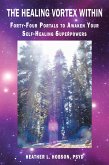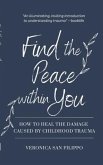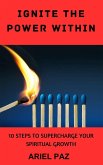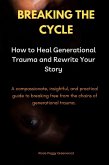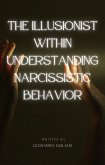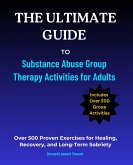The trauma of abuse often leaves deep scars-both visible and invisible. This book goes beyond traditional self-help by focusing on trauma-informed self-care, offering personalized healing practices that empower survivors to take control of their recovery. By addressing the interconnectedness of the mind, body, and spirit, this guide equips survivors with the tools they need to rebuild their lives holistically and sustainably.
Each chapter of "Healing the Wounds Within" focuses on a different aspect of self-care and healing, providing actionable strategies for survivors at any stage of their recovery:
Physical Healing: Learn to reconnect with your body through gentle physical practices such as yoga, deep breathing exercises, and grounding techniques that help survivors feel safe and strong in their bodies again. Discover the importance of proper nutrition, sleep, and somatic therapies that can help release trauma stored in the body.
Emotional Healing: Gain practical guidance on recognizing and validating emotions, even the most difficult ones, without judgment. The book offers mindfulness exercises to help survivors stay present and manage overwhelming emotions, along with journaling prompts specifically designed to encourage emotional expression and self-reflection.
Psychological and Cognitive Healing: This section introduces cognitive behavioral strategies to help survivors reframe negative thoughts and beliefs that stem from trauma. Survivors will learn how to cultivate self-compassion and build emotional resilience, and how therapeutic support can play a crucial role in the recovery process.
Spiritual Healing: Reconnect with your spirituality-whether through religious faith, connection to nature, or personal rituals. The book offers spiritual practices, affirmations, and mantras that survivors can use to reinforce their healing journey, encouraging a deeper sense of peace, hope, and purpose.
Creating a Personalized Self-Care Plan: Survivors are guided through the process of building a self-care plan that integrates physical, emotional, mental, and spiritual practices. The book offers suggestions for daily and weekly routines, providing structure to promote healing. As survivors progress in their journey, they are encouraged to regularly review and adjust their plan to meet their evolving needs.
Navigating Challenges: Understand that setbacks are a normal part of healing and gain strategies for managing difficult days with grace. Learn the importance of building a support network that includes friends, family, and professional help, and how to celebrate progress-no matter how small-to foster hope and resilience.
Written with sensitivity and backed by trauma research, "Healing the Wounds Within" not only validates the pain of survivors but also provides practical and empowering tools for their recovery. This guide serves as a beacon of hope, showing survivors that while the road to healing may be long, it is filled with opportunities for growth, renewal, and transformation.
Dieser Download kann aus rechtlichen Gründen nur mit Rechnungsadresse in A, B, BG, CY, CZ, D, DK, EW, E, FIN, F, GR, H, IRL, I, LT, L, LR, M, NL, PL, P, R, S, SLO, SK ausgeliefert werden.




